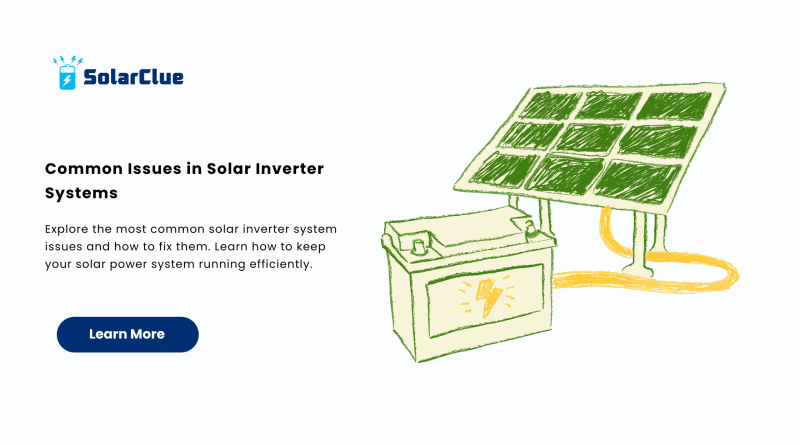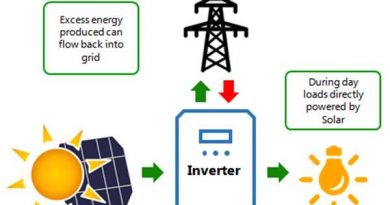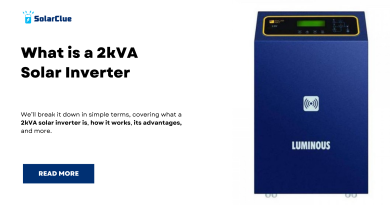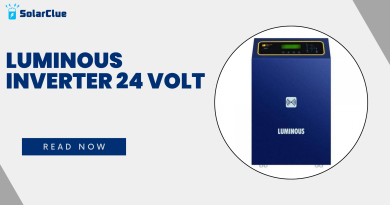Common Issues in Solar Inverter Systems
In today’s push for clean energy, solar power has emerged as a leading solution for reducing energy bills and cutting carbon emissions. At the heart of any solar power system lies the solar inverter, the key component responsible for converting DC electricity from solar panels into usable AC power for homes and businesses. But just like any electronic device, solar inverter systems are prone to problems that can affect performance or stop energy production altogether. This blog aims to explore the common issues in solar inverter systems, how to identify them, and most importantly, how to fix or prevent them.
Table of Contents
- 1 What is a Solar Inverter?
- 2 Why Solar Inverter Issues Matter
- 3 Common Solar Inverter System Issues
- 4 Diagnosing the Problems
- 5 Preventive Maintenance Tips
- 6 When to Call a Professional
- 7 Long-Term Reliability
- 8 Common Myths About Solar Inverters
- 9 How to Extend Your Inverter’s Lifespan
- 10 Cost of Replacing a Solar Inverter
- 11 The Role of the Installer
- 12 Integrating Battery Storage
- 13 Monitoring System Efficiency
- 14 Conclusion
- 15 FAQs
What is a Solar Inverter?
A solar inverter is a critical component that converts the direct current (DC) produced by solar panels into alternating current (AC) that can be used by household appliances. There are three main types:
Types of Solar Inverters
- String Inverters – Most commonly used in residential installations.
- Microinverters – Installed on each panel, ideal for shaded areas.
- Hybrid Inverters – Combine solar and battery storage capabilities.
Why Solar Inverter Issues Matter
When a solar inverter system fails or malfunctions, your solar power system becomes inefficient or non-operational. Not only can this lead to higher utility bills, but it also reduces the return on your solar investment.
Common Solar Inverter System Issues
1. No Power Output
One of the most alarming problems is when the inverter produces no output. This could stem from:
- Faulty DC wiring
- Blown fuses
- Shutdown due to overvoltage or undervoltage
Solution: Check for loose or damaged wires, inspect breakers and fuses, and consult the inverter’s error log.
2. Grid Disconnection
Inverters are designed to disconnect from the grid during outages for safety reasons. However, false triggers can happen.
Solution: Ensure the voltage and frequency limits are configured correctly. If issues persist, firmware updates may be needed.
3. Isolation Fault
This occurs when there’s a short circuit between the current-carrying conductor and the ground.
Solution: Isolation faults often need professional diagnosis and replacement of faulty components.
Diagnosing the Problems
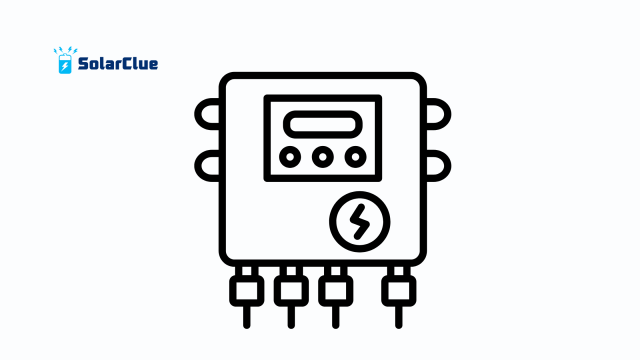
Error Codes
Most modern inverters display error codes. Understanding these codes is crucial for effective troubleshooting.
Performance Monitoring
Use monitoring software to track real-time output and identify inconsistencies in power generation.
Preventive Maintenance Tips
Regular Inspections
- Check for dust and debris
- Look for visible damage
- Verify panel alignment
Firmware Updates
Keep your inverter’s firmware updated to benefit from the latest performance and safety enhancements.
When to Call a Professional
While minor issues can be handled with basic troubleshooting, persistent or complex solar inverter issues should be addressed by certified technicians to avoid voiding the warranty.
Long-Term Reliability
Choosing the Right Inverter
Invest in a high-quality inverter from a reputable brand to minimize risks and maximize efficiency.
Warranty and Support
Ensure your inverter comes with a strong warranty and responsive customer support.
Common Myths About Solar Inverters
“Inverters don’t need maintenance”
Even high-end inverters require periodic checks to function optimally.
“Inverter size doesn’t matter”
Undersized or oversized inverters can lead to inefficiencies.
How to Extend Your Inverter’s Lifespan
- Install in a shaded, well-ventilated area
- Avoid exposure to moisture and pests
- Perform annual maintenance
Cost of Replacing a Solar Inverter
Replacement costs vary but can range between ₹20,000 to ₹1,00,000 depending on the inverter type and capacity.
The Role of the Installer
A well-installed solar power system reduces the chance of inverter issues. Always choose certified and experienced installers.
Integrating Battery Storage
Adding battery storage can improve system reliability and reduce inverter strain by storing excess energy.
Monitoring System Efficiency
Using IoT-enabled apps can give real-time updates and alerts, helping you act before minor issues escalate.
Conclusion
Dealing with solar inverter issues can be frustrating, but most problems are manageable with the right approach. Understanding how your solar inverter system works, being proactive with maintenance, and knowing when to call in a professional are all keys to a resilient and efficient solar power system.
Still have questions or need help with your system? Explore a wealth of expert advice at solarclue.com or dive deeper into technical guides on blog.solarclue.com. Your path to hassle-free solar begins here!
FAQs
Q1. What is the most common problem in solar inverters?
A: The most common issue is a complete loss of power output, often caused by faulty wiring, fuses, or voltage irregularities.
Q2. How often should I check my solar inverter system?
A: It’s recommended to check at least once a month using performance monitoring tools and visual inspection.
Q3. Can I fix solar inverter issues myself?
A: Basic troubleshooting can be done by homeowners, but electrical issues should be handled by professionals.
Q4. How long do solar inverters typically last?
A: Most solar inverters have a lifespan of 10–15 years, though high-end models can last longer with proper maintenance.
Q5. Is it worth upgrading to a hybrid inverter?
A: Yes, if you plan to add battery storage or want more control over your energy usage, a hybrid inverter is a smart choice.

